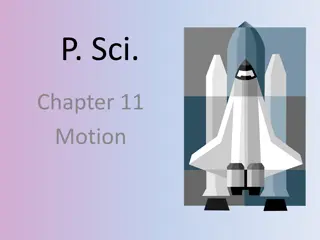Geodetic Survey and Reference Frames in Canada
The Canadian Geodetic Survey plays a crucial role in the publication of coordinates, utilizing frames like NAD83(CSRS) and CGVD2013. The adoption of geoid-based vertical datums reflects advancements in technology and the need to maintain accurate reference systems. The transition from older reference frames like CGVD28 to modern systems demonstrates Canada's commitment to precision and adaptability in geospatial measurements.
Download Presentation

Please find below an Image/Link to download the presentation.
The content on the website is provided AS IS for your information and personal use only. It may not be sold, licensed, or shared on other websites without obtaining consent from the author.If you encounter any issues during the download, it is possible that the publisher has removed the file from their server.
You are allowed to download the files provided on this website for personal or commercial use, subject to the condition that they are used lawfully. All files are the property of their respective owners.
The content on the website is provided AS IS for your information and personal use only. It may not be sold, licensed, or shared on other websites without obtaining consent from the author.
E N D
Presentation Transcript
2 of 15 Geometric Reference Frame (Canada) 3 Vertical Reference Frame (Canada) 6 Questions? 15
3 of 15 Canadian Geodetic Survey publishes coordinates in NAD83(CSRS) v6 epoch 2010.0. o Each province adopted a specific version/epoch (e.g., Quebec and New Brunswick use NAD83(CSRS) v2 epoch 1997.0). o Provinces can upgrade to a newer version when they are ready. Canadian Geodetic Survey has no plans to replace NAD83(CSRS). Canadian Geodetic Survey is collaborating with the National Geodetic Survey in the realization of the new (North) American geometric reference frame. Canadian Geodetic Survey will publish coordinates in the new geometric reference frame o Station reports, NRCan s CSRS-PPP, TRX software.
4 of 15 North American Frames NAD27 Latitude and Longitude International Frames Grid transformation Parameter transformation ITRF88 ITRF89 ITRF90 ITRF91 ITRF92 ITRF93 ITRF94 ITRF96 ITRF97 ITRF2000 ITRF2005 ITRF2008 ITRF2014* NAD83(Original) Latitude and Longitude Canada NAD83(CSRS) v6 e. 2010.0 NAD83(NSRS/CSRS) Latitude, Longitude and Ellipsoidal Height Equivalent USA NAD 83(2011) e. 2010.0 ITRF20xx/NAD 2022 * scheduled for 2015
5 of 15 Select coordinates type (geographic) Select a hybrid or gravimetric geoid model (CGG2013) Select reference frame (NAD83(CSRS)) New reference frame would be added to the drop-box list Select epoch (2010.0) Velocities of the station with respect to the reference frame Height from GNSS and selected geoid model Height of the station from adjustment of the levelling network
6 of 15 Canada adopted CGVD2013 in November 2013. o Defined by a specific equipotential surface (W0 = 62,636,856 m2/s2) o Realized by a geoid model (CGG2013) o Compatible with GNSS technology Canada adopted a geoid-based vertical datum because o Cost in maintaining and expanding a levelling network for a country as vast as Canada o No access to CGVD28 in remote regions o New technologies available (e.g., GNSS, satellite gravimetry) o Distortions in CGVD28 (~1.2 m at the national scale) Canada has the support from the provinces in the implementation of the new vertical reference system. Overall, Canadian users acknowledge that the benefits of a geoid-based datum outweigh disadvantages [HAL report, 2006]. o Main concerns relate to cost in converting legacy data, and confusion in heights
7 of 15 CGVD28 continues to co-exist with CGVD2013 during the transition period o Readjustment of the levelling network with constraints to coincide with CGVD2013; Publish bench marks in CGVD2013 and CGVD28; GNSS-derived orthometric heights prevail over the heights from the levelling adjustment. o CGS stopped maintenance of the bench marks of the national first-order levelling network since 2002; Bench marks are not maintained by GNSS observation either. o CGS cannot confirm stability of the bench marks. Canada s geodetic infrastructure o ~90 continuously tracking reference stations (federal/provincial) o ~200 force-centered pillars (passive stations) o Provincial High Precision Networks, Commercial RTK Use of CGVD2013 (still early stage) o Federal agencies (e.g., NRCan (floodplain mapping), Transport (airport), Environment Canada (inland water; transboundary waters)) o Provincial agencies initiated migration to CGVD2013
8 of 15 Transboundary Waters CGVD28 (Levelling; GNSS/HTv2.0) => CGVD2013 (Geoid model) IGLD 85 (Levelling) NAVD 88 (Levelling; GNSS/Geoid12A) Courtesy of the International Joint Commission
9 of 15 A unified height system for North America based on the equipotential surface: W0 = 62,636,856 m2/s2 This surface is materialized by a geoid model which integrates satellite, airborne, and surface gravity data. CGS and NGS agreed on this definition. This definition is already adopted in Canada (CGVD2013). Mexico and countries in Central America and Caribbean agreed on this definition. Coordinating Committee for the Great Lakes and St-Lawrence River System proposed to define IGLD2020 on this surface. IERS and IAU had already adopted this reference surface in their conventions.
10 of 15 Constraints : Continental (32) : Newfoundland (4) : Prince Edward Island (1) : Iles de la Madeleine (1) : Ile d Anticosti (1) : Vancouver Island (2) : Gauges (12) 1906-1928 1929-1939 1940-1965 1966-1971 1972-1981 1982-1989 1990-2007
11 of 15 Active Stations Processed at CGS
12 of 15 HCGVD2013 HNAVD 88 C.I.: 10 cm Conversion between NAVD 88 and CGVD2013 o Conduct a GNSS survey on bench marks having NAVD 88 elevation o Published elevations at common bench marks o GEOID12A - CGG2013 (above image)
13 of 15 CSRS-Precise Point Positioning (PPP): Process GPS RINEX files to provide stand-alone coordinates (latitude, longitude, ellipsoidal height and orthometric height). Works any where in the world. [on-line] GPS-H: Convert ellipsoidal heights to orthometric heights (makes use of any geoid models, works with different types of coordinate systems (geographic, UTM, MTM and Cartesian), and different geometric reference frames (NAD83(CSRS) and ITRF)). Could also convert between vertical datums. [on-line and desktop] TRX: Transform coordinates between different geometric reference frames (e.g., NAD83(CSRS), ITRF), epochs and coordinate systems (e.g., geographic, UTM, MTM, Cartesian). [on-line and desktop]
14 of 15 Labelling Heights Type of height: Orthometric (H), dynamic (Hd), normal (Hn), ellipsoidal (h), geoid (N) Height Reference System: NAD83, ITRF, CGVD28, CGVD2013, NAVD 88 Height Reference Frame: CSRS v., Geoid model Precision (e.g., 0.05 m) Epoch (e.g., 2012.75) N H Height: 101.61 m Precision: 0.01 m Epoch: 2013.2 Type of height: Orthometric Height system: CGVD2013 Height frame: CGG2013 H = 23.126 0.007 m CGVD2013(CGG2013) Epoch 2013.2 h = 23.126 0.007 m NAD83(CSRS) Epoch 2013.2 h Height: 91.256 m Precision: 0.007 m Epoch: 2013.2 Type of height: Ellipsoidal (geodetic) Height system: NAD83 Height frame: CSRS (version if available) Geoid Height: -10.354 m Precision: 0.015 m Epoch: Static Model: CGG2013 Frame: NAD83(CSRS) N = -10.354 0.015 m CGG2013, NAD83(CSRS)





























